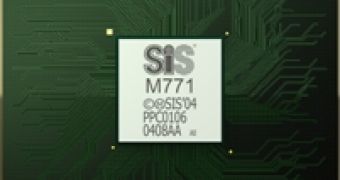Discrete graphics cards will always be needed and they are here to stay, despite CPU and GPU integration efforts such as AMD's Fussion platform. While the market for discrete cards is mostly constant or very slow growing, the IGP (integrated graphics processor) market for low-end consumers is rapidly growing and SiS is determined to make the most of it.
The IGP has quite a long history started in 1996 when SiS introduced the SiS5110 Pentium notebook chipset, the first that integrated LCD, graphics chips, and PCMCIA into a core-logic chipset, while in late April 1999 Intel introduced the 810 "Whitney" chipset with integrated graphics. Now Intel is being chased by not only SiS and VIA, but by AMD and Nvidia as well. AMD is the leader right now in terms of performance and features, and we expect the next IGP from Nvidia to raise the bar even higher. It had to be expected when 70% of the market is in a particular category, strong competition can be felt.
SiS right now has the Mirage 3 IGP that is designed for users who want mainstream Microsoft Windows Vista support. The current Mirage IGP supports at hardware level DirectX 9.0, and for the advanced graphical features found in Vista the company introduced the Real Video technology that is powerful enough to use the Aero 3D interface including 3D animation, transparency and desktop composition. The next step in SiS IGP offerings is the Mirage 3+ that includes, beside the technologies found in its older brother, support for Advanced Power Management that will help save power when 3D acceleration is not used.
With the coming of Intel's Penryn processors, SiS will launch the SiS680 chipset, aimed again at the low-end of the hardware market. SiS has plans for five different variants of the 680 chipset, while introducing the Mirage 4 graphics core that will support DirectX 10.

 14 DAY TRIAL //
14 DAY TRIAL //